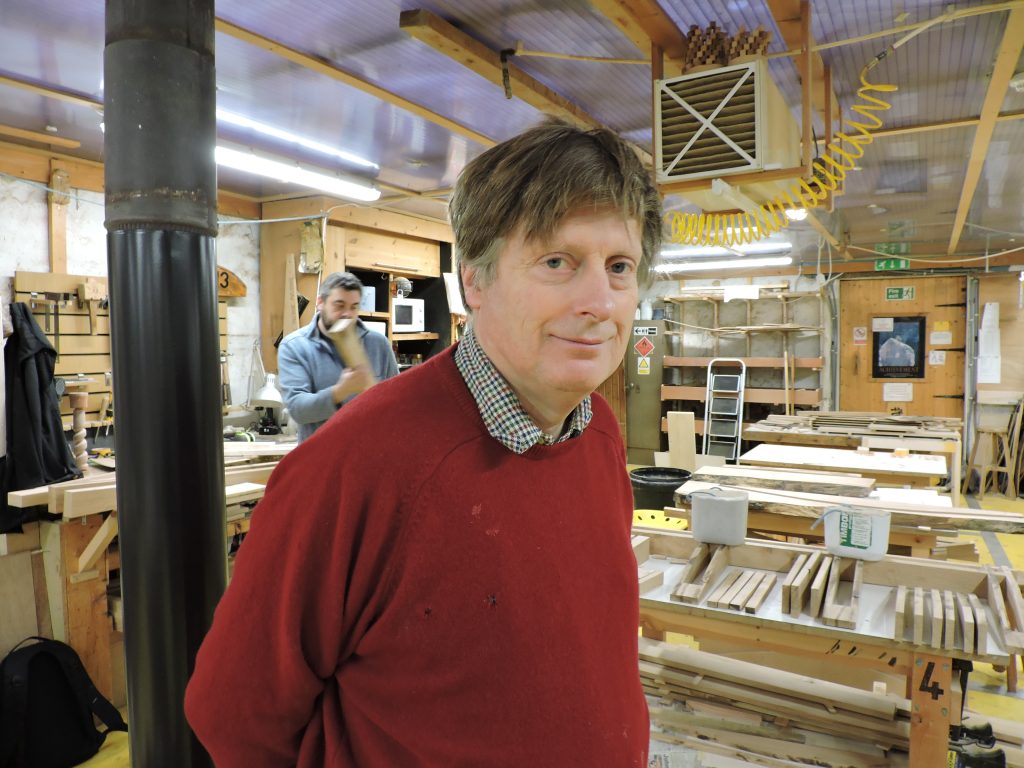Anselm Fraser, principal, The Chippendale International School of Furniture, writing in The Woodworker magazine.
I’ve been teaching furniture design and making for well over 30 years, so you might think that I know everything there is to know.
But while my aim has always been to help students become wonderful woodworkers and help them create some amazing pieces of furniture, I quickly realised that teaching woodworking is a two-way process.
At first, it was a strange feeling because a teacher is there to teach, and a student is there to learn. I teach, they learn.
But what I’ve learned as a teacher, and what has become an exciting part of my job, is that woodworking is a constant process of lifelong learning. I teach our students, but I also learn from them.
It may be a simple philosophy, but it’s something we should all embrace, whether as woodworking hobbyists or professionals. It’s called collaborative learning.
At the Chippendale school, as with any furniture school, the day is split between more formal lectures and small group tuition. Students are also expected, with tutor support, to work on their own pieces of furniture.
Proximal learning
It’s an approach that encourages the greatest amount of collaboration between students. In education-speak, it’s called the zone of proximal learning.
It means that between the things a student knows and doesn’t know, there are grey areas that he or she can learn with some guidance – whether that’s from tutor support, or interaction with other students.
That’s why we encourage our students to take an interest in everybody else’s work. Come to our school, and you’ll constantly see students at other students’ benches, and asking lots of questions. How did you do that? What tools did you use? What kind of wood is that? How did you make that joint?
It’s an approach to learning which recognises that, as adults, people engaged in collaborative learning can capitalise on one another’s resources and skills. It’s an approach that demonstrably works.
Collaborative learning is based on the idea that learning is a natural social act and that, by simple interaction between students, everyone benefits. Over the past 40 years there have been many systematic reviews and meta-analyses that provide consistent evidence about the value of collaborative learning.
It’s something that we’ve embraced at the Chippendale school. Our professional course recognises that, while we can teach our students everything about veneering, marquetry or steam-bending or dovetail joints, we can’t teach creativity.
Yet skill and creativity are the two elements that every woodworker needs if he or she is to be successful. That’s where we see the importance and real benefits of collaborative learning.
Practicalities
Because creativity is something that we absolutely believe can be nurtured because everybody is born creative. After all, one of the first things we do as small children is pick up a crayon or paintbrush.
It’s only as we get older and have to concentrate on more academic subjects, and then the practicalities of a job or career, that our creativity fades into the background.
Our professional course is all about rekindling that creative dynamism, from our regular visits to stately homes and museums to the international tutors we bring to the school.
But it’s also about being inspired by each other. While we can teach our students practical skills, there is nothing better than learning from each other. Asking questions. Asking more questions.
For example, we require each of our students to stand up and talk through the project they’re working on. The inspiration behind it, how they’re designing it, and the challenges they think they’ll face in its construction.
On one level it’s a communication challenge because it requires students to present their ideas clearly and concisely – in much the same way that they’ll have to make presentations to customers.
Constructive criticism
But it’s also a simple strategy that recognises that woodworking can’t simply be learned in lectures or from books. The very best teachers can often be other students.
Our daily stand-ups are therefore an opportunity for our students to comment on other students’ ideas,. To offer constructive criticism or provide their own ideas. In other words, it encourages students to see that they can learn from each other, and not simply rely on our tutors.
We’re well-placed to use peer-to-peer teaching and learning as we are an international school. Our students this year came from Canada to Australia, and everywhere in between.
Our students therefore come from a variety of cultures, with different perspectives on what makes good furniture design. Everyone has opinions, and we encourage them to share those opinions.
In doing so, our students challenge each other’s designs and offer practical advice – important elements in rekindling creativity and finding new ways to discover inspiration.
It’s also an approach that every woodworker should adopt. Read magazines like The Woodworker voraciously. Join local woodworking groups. Go to meetings. Make contact with other woodworkers.
Above all, be prepared to learn. Be prepared to step outside comfort zones. Set a target of learning something new every week, however experienced you are.
We may think we know everything, but there’s always something that we can learn from someone else.
